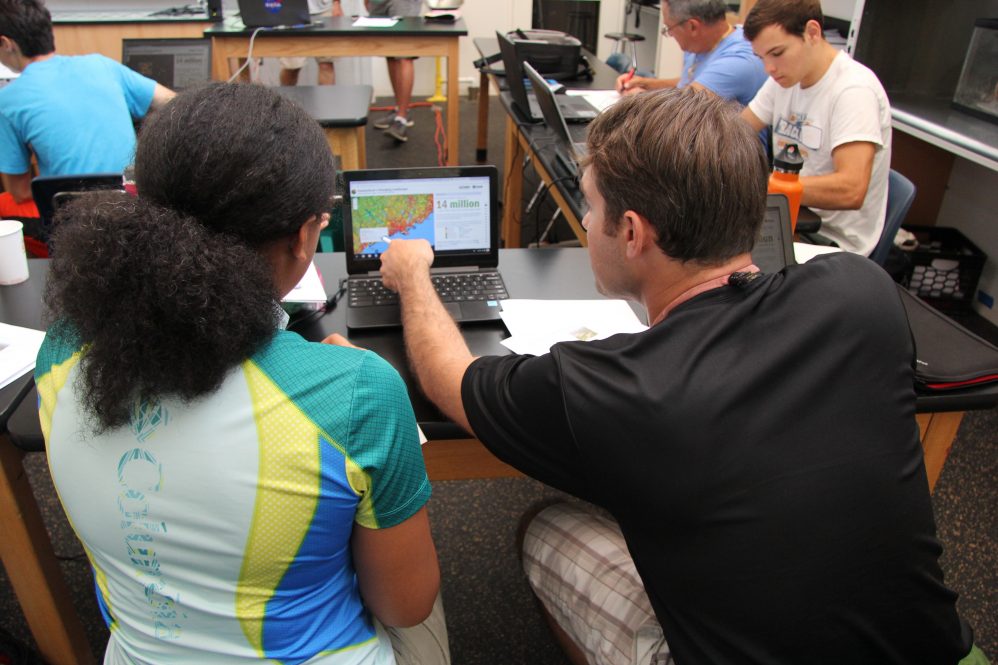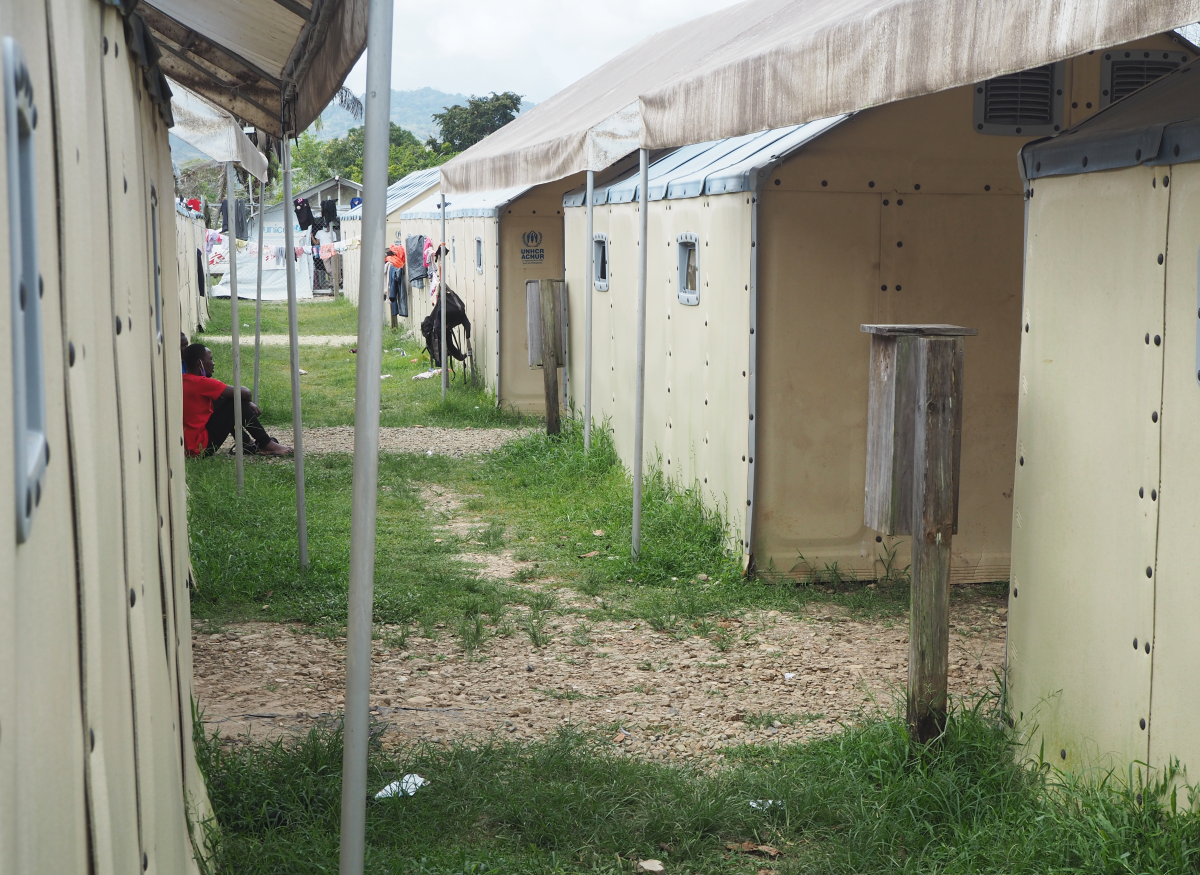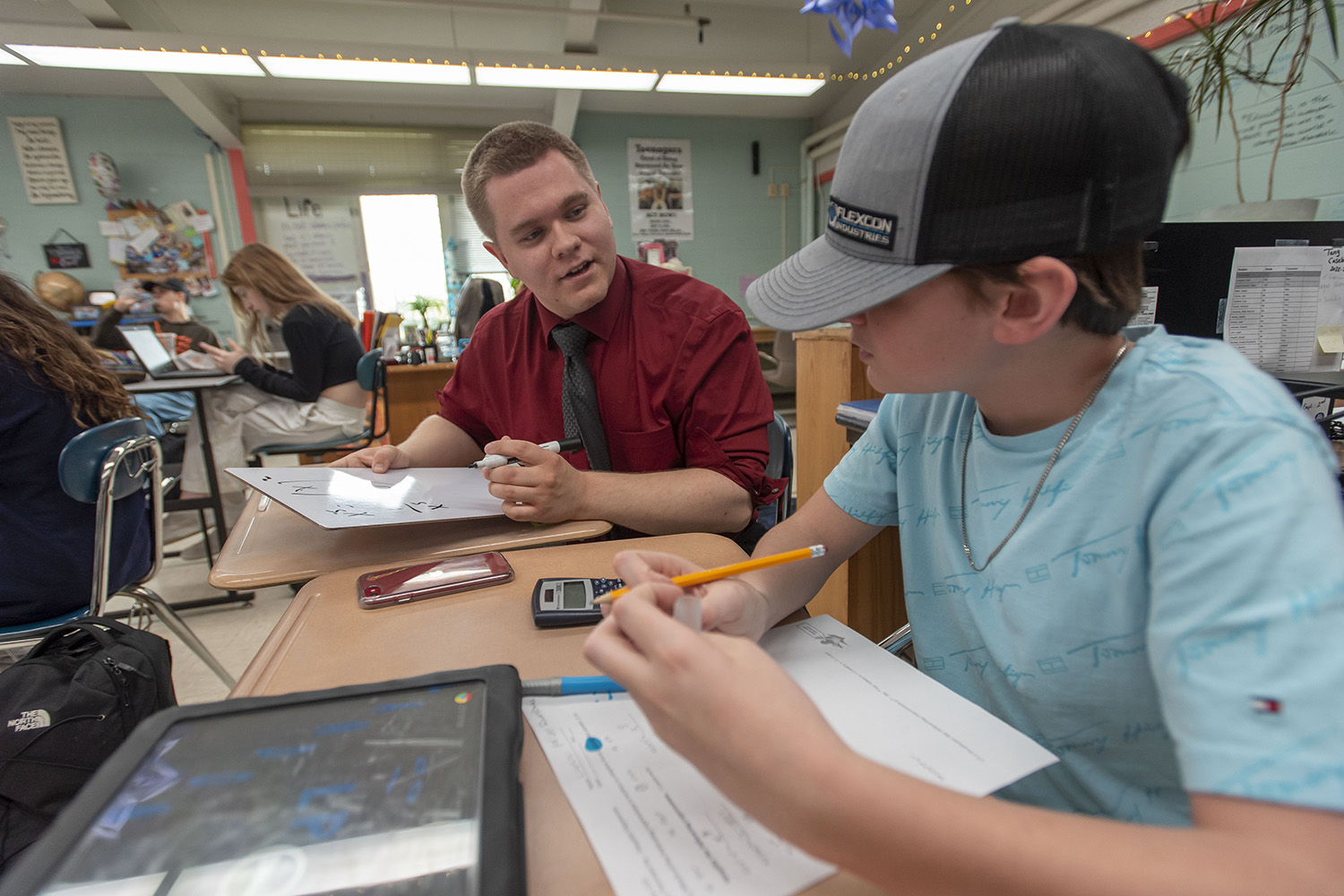The science behind protecting the environment is only one piece of addressing the climate crisis; people need to communicate this information and the stories of those impacted by climate change to the public to inspire necessary action.
With this understanding, a group of interdisciplinary UConn researchers are working on a grant that will support high school students in designing multimedia projects that focus on local environmental issues in their communities. This work is supported by a $1.35 million grant from the National Science Foundation.
This project will merge environmental science, geospatial technology, digital media and education through an ambitious collaboration between faculty across disciplines. Laura Cisneros, assistant extension professor of natural resources and the environment (NRE) and director of the UConn Natural Resources Conservation Academy (NRCA), is the PI on this project. Other researchers involved in the project are Todd Campbell, department head and professor of curriculum and instruction in the Neag School of Education; Cary Chadwick, extension educator with the UConn Center for Land Use Education and Research (CLEAR); Heather Elliott-Famularo, department head and professor of digital media and design; Anna Lindemann assistant professor of digital media and design; David Dickson, extension educator and interim director of CLEAR; and Nicole Freidenfelds, extension educator and NRCA program coordinator.
The College of Agriculture, Health and Natural Resources and the Neag School have been collaborating for a decade, working to bring learning opportunities to youth and adults so they can carry out local environmental projects through the NRCA. However, Cisneros says these efforts have missed a critical component: communication.
“The missing piece here is how these individuals can reconnect projects back to their community in a creative and innovative way, and really, that science communication piece,” Cisneros says.
This led the extension team to connect with the Department of Digital Media and Design over their shared interests in improving scientific communication skills and diversifying the voices of people telling environmental stories. Both STEM and digital media and design fields have historically been dominated by a white male perspective.
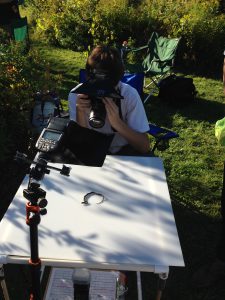
“We thought that if we could bring people doing the scientific research together with the people telling the stories about that scientific research and do that by encouraging new perspectives and new voices, especially within the state, well, that was what got us all really excited,” Elliott-Famularo says. “This is how we came up with the notion of developing ‘Eco-Digital Storytellers.'”
With this grant, the team will work with high schools in New Haven, Hartford, and Willimantic, which serve diverse student bodies.
Over the course of three years, the program aims to serve 270 high school students across 54 school pods. Each “pod” will include a small group of high school students and their teacher.
The team will teach the pods how to engage in educational storytelling, using geospatial technology and digital media tools as vessels to convey their messages. Participants will be taught how to use a mapping application, called ArcGIS Storymaps, to create interactive online narratives using maps and digital media. They will also learn basic digital media and design skills, such as video and animation, to share engaging stories about their environmental projects.
“We’re really thinking about narrative structures as a way for people to express their identities and their thoughts and actions about environmental issues and then using technology to support those narratives,” Lindemann says.
“I believe it’s going to open up an avenue to connect to and communicate with young audiences, on their level,” Chadwick says. “I’m really excited about the storytelling aspect of this. I think it has a real potential to reach and engage with new audiences.”
The pods will apply these skills to a project addressing a local environmental concern. These may include issues like endangered species, protecting coastal towns from the impacts of climate change, water quality, wildlife monitoring, or environmental justice based on the unique needs of each community.
“It’s really community driven and community informed,” Cisneros says.
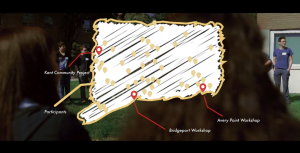
Winner in the “2020 STEM for All Video Showcase,” edited by DMD student, David Cai. This piece helped inspire this new collaboration. (Contributed photo)
In working with these underrepresented communities the researchers say they aim to not merely teach them a set of skills, but to learn from and with these communities.
“As we engage, we want to go beyond just thinking about how we provide access for programming,” Campbell says. “But instead, we want to let community members – students and teachers – shape the programming and let us try to stretch ourselves to recognize more expansive versions of what it could mean to do such consequential work in the communities and how we can provide support while also engaging in learning beside communities.”
“It’s going to be based on them identifying the issues they want to address in their communities,” Dickson says. “We try not to presuppose what those issues are because something we may think is an issue they may not be as impacted or motivated by, so we try to let students determine what they see as an environmental issue in their community. It’s finding that balance between helping lead them to the types of projects they could do and them charting their own adventure.”
UConn students will also play an important role in the project. In Fall 2023, a group of undergraduate UConn students will take a course to learn how to serve as “Near-Peer Mentors” for the high school pods. The students, who will come from environmental sciences, biological sciences, or digital media and design programs, will learn how to serve as culturally sustaining and trauma-informed mentors. They will also learn how to use the relevant technologies and about Connecticut-specific environmental problems. In total, the program will support the training of 36 mentors.
Empowering college students to be mentors who will then inspire high school students is one of the really exciting and novel parts of this project. — Anna Lindemann
In the late fall through spring, the mentors will work with their pods to help teach technical skills and support them in developing their projects.
“Empowering college students to be mentors who will then inspire high school students is one of the really exciting and novel parts of this project,” Lindemann says.
Campbell will lead the research portion of this project focused on cultural learning pathways. The research will focus on how those involved in the project learn as individuals and groups, with a focus on the role of identity. Campbell will collect qualitative and quantitative data from participants about if and how they feel their work is recognized, by themselves and others, as meaningful.
To support this all-important recognition, this program will include an end-of-year showcase for students to present their projects.
These findings will provide insight into how to ensure the contributions of underrepresented individuals are valued and recognized in the E-STEAM (Environmental Science, Technology, Engineering, Arts, and Mathematics) field.
Campbell will also collect information about how students’ interest in E-STEAM careers changes over the course of their engagement in the project as they interact with professionals working in these fields.
“Our research focus is really grounded in identity and so we’re looking at ways we can support that identity development that might connect them to the [E]STEAM fields,” Campbell says.
